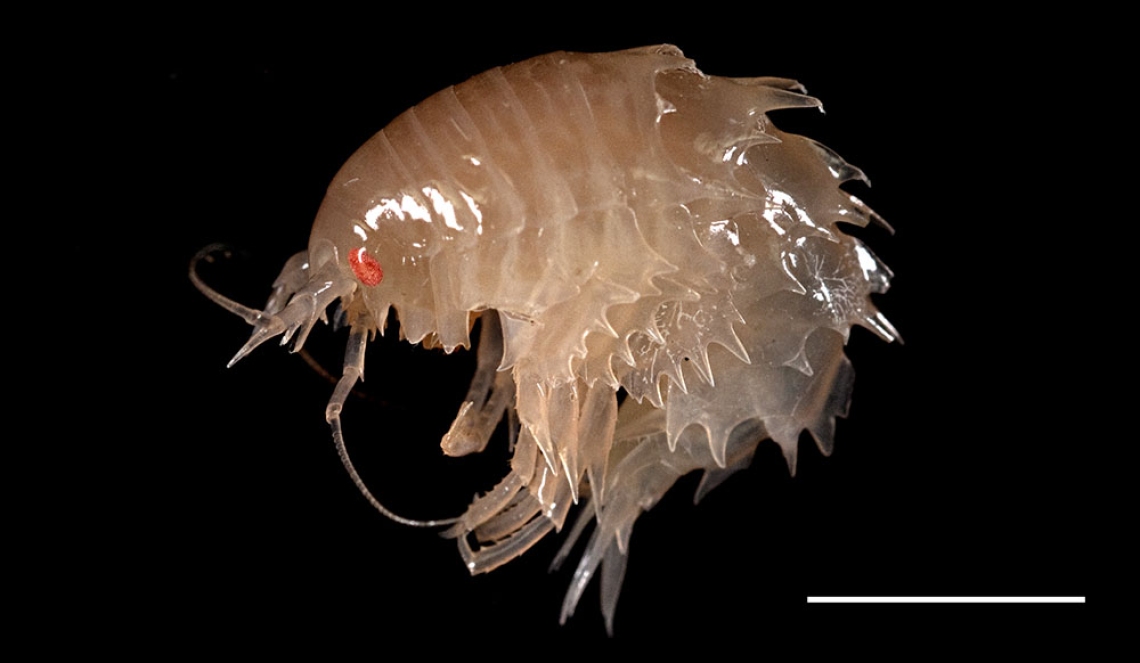This week is International Museum Week on Twitter so we thought we would bring you a story about an exciting find in our NIWA Invertebrate Collection archives.
This discovery acts as an example of how collections can add to our knowledge of existing species distributions. The spiky amphipod species Labriphimedia pulchridentata (Stebbing, 1888) pictured is the first photo showing the live colouration of this species. It belongs to the family of Iphimediidae, which contains over 100 species in 15 genera. This particular species was originally only known from Heard Island, a sub-Antarctic island on the other side of the Southern Ocean, where it was described 127 years ago.
Read about the Iphimediid family on the World Register of Marine Species
Significant find more than a century after first discovery
The 2008 New Zealand-Australian research voyage to the Macquarie Ridge south west of New Zealand collected several 2 cm long specimens of this beautiful amphipod species, in 700 m water depth. Our amphipod expert Anne-Nina Lörz published a paper, First records of Epimeriidae and Iphimediidae from Macquarie Ridge, on the significance of this find in 2012, 124 years after the original discovery of this species!
How long it takes to name a species
The average time to describe a species from the date of collection of a specimen is 20.7 years (Benoît, et. al., 2012).
This average ‘shelf-life’ was calculated from a random survey of species described in 2007 across all disciplines in the collections of many museums and institutions all over the world. The range of times to describe species was from zero years up to 206 years! This highlights how collections around the world act as a reservoir of potential new species, but also, in the case of the little spiky amphipod Labriphimedia pulchridentata, how they can help to inform us about the real distribution of species described a very long time ago.

